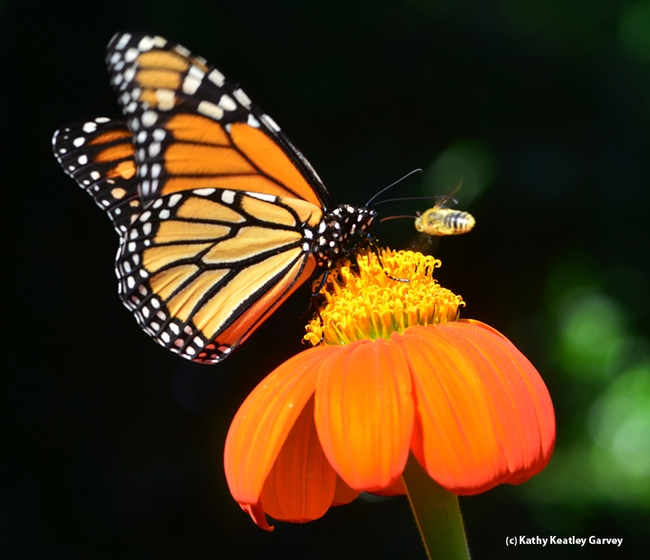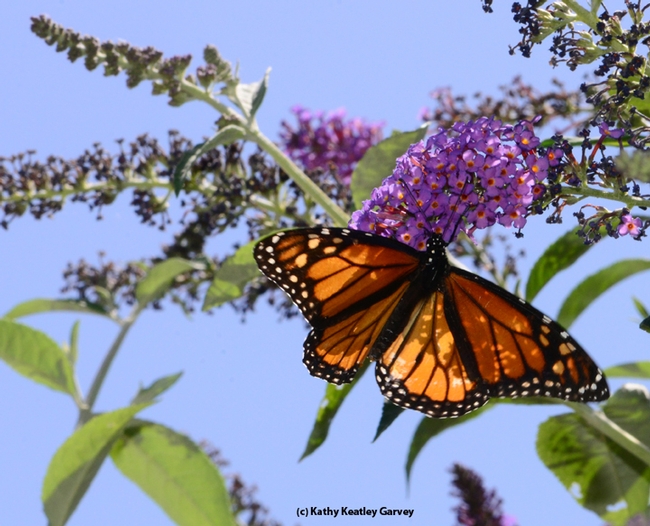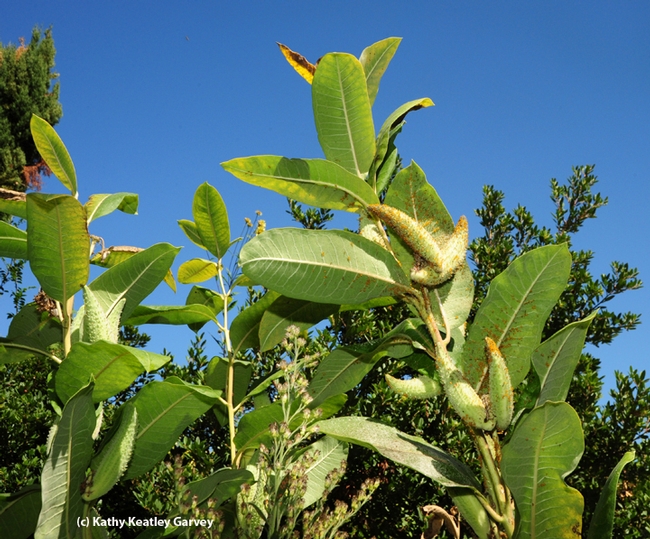The Xerces Society for Invertebrate Conservation issued news today that is both disturbing and hopeful.
Disturbing in that the monarch butterfly population (Danaus plexippus) has declined by more than 90 percent in under 20 years.
Hopeful in that the monarch may receive federal protection through the Endangered Species Act.
The Xerces Society, the Center for Biological Diversity, the Center for Food Safety, and monarch scientist Lincoln Brower, have filed a legal petition with the U.S. Fish and Wildlife Service to protect the monarch through the Endangered Species Act. The agency must respond within 30 days as to whether the petition warrants further review.
“Monarchs are in a deadly free fall and the threats they face are now so large in scale that Endangered Species Act protection is needed sooner rather than later, while there is still time to reverse the severe decline in the heart of their range,” related Lincoln Brower, preeminent monarch researcher and conservationist, who has been studying the species since 1954.
Tragicallly, the monarchs have lost more than 165 million acres of habitat, including nearly a third of their summer breeding grounds that contain their host plant, milkweed. The female monarchs lay their eggs on milkweed and this is the only food their larvae eat.
As Lynn Kimsey, director of the Bohart Museum of Entomology and professor of entomology at UC Davis, told us today: "Might be too little too late but they have to preserve/conserve milkweeds (Asclepias spp.) That's more important than the butterfly itself."
Xerces earlier sounded the alarm on the critical role that milkweeds play in the monarch's life cycle.
Senior scientist Tierra Curry of the Center for Biological Diversity, hammered home this point in the news release: “The 90 percent drop in the monarch's population is a loss so staggering that in human-population terms it would be like losing every living person in the United States except those in Florida and Ohio.”
And the loss of habitat is equal in size to the state of Texas.
The news release said that the butterfly's dramatic decline is "being driven by the widespread planting of genetically engineered crops in the Midwest, where most monarchs are born. The vast majority of genetically engineered crops are made to be resistant to Monsanto's Roundup herbicide, a uniquely potent killer of milkweed, the monarch caterpillar's only food. The dramatic surge in Roundup use with Roundup Ready crops has virtually wiped out milkweed plants in midwestern corn and soybean fields."
Science policy analyst Bill Freese of the Center for Food Safety was quoted as saying: "The widespread decline of monarchs is driven by the massive spraying of herbicides on genetically engineered crops, which has virtually eliminated monarch habitat in cropland that dominates the Midwest landscape. Doing what is needed to protect monarchs will also benefit pollinators and other valuable insects, and thus safeguard our food supply.”
Monarch butterflies are known for their spectacular multigenerational migration each year from Mexico to Canada and back, the news release said.
"The population has declined from a recorded high of approximately 1 billion butterflies in the mid-1990s to only 35 million butterflies last winter, the lowest number ever recorded," according to the release. "The overall population shows a steep and statistically significant decline of 90 percent over 20 years. In addition to herbicide use with genetically engineered crops, monarchs are also threatened by global climate change, drought and heat waves, other pesticides, urban sprawl, and logging on their Mexican wintering grounds. Scientists have predicted that the monarch's entire winter range in Mexico and large parts of its summer range in the states could become unsuitable due to changing temperatures and increased risk of drought, heat waves and severe storms."
Endangered species director Sarina Jepson of the Xerces Society worries--and rightfully so--that the monarch may become extinct, just like the passenger pigeon.
We are, too. We've seen only two--two--of these majestic butterflies fluttering in our family bee garden this year.
Attached Images:

Monarch butterfly nectaring on Mexican sunflower, Tithonia, as a territorial male longhorned bee, Melissodes agilis, takes aim. (Photo by Kathy Keatley Garvey)

Monarch butterfly heading toward a butterfly bush. (Photo by Kathy Keatley Garvey)

This is milkweed, the monarch's host plant. (Photo by Kathy Keatley Garvey)